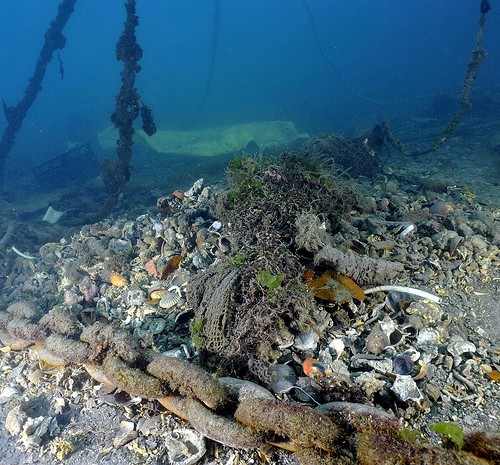Rising Levels of Plastic Waste on Arctic Seafloor a Cause for Concern

Recent research reveals that even remote areas of the oceans are affected by increasing levels of plastic waste on the seafloor. The study found that quantities of litter from human activities, mostly plastic, on the seabed of an isolated Arctic site, doubled from 2002 to 2011.
Around 60% of the Earth’s surface is covered by the seafloor, yet very little is known about how pollution has affected the deep ocean, in particular, remote areas such as the Arctic.
Despite a ban on solid waste disposal at sea in 1988, under Annex V of the MARPOL Convention1, research has revealed that even the most isolated environments are no longer free from litter.
Most sea litter is made up of plastic waste and more than 10% of the global production of plastics (over 265 million tonnes every year) ends up in the oceans, where it may remain for centuries and can cause potential danger to marine life through entanglement and suffocation. ‘Microplastics’, tiny particles of broken-down plastics, can also release a range of chemicals known to be harmful in high concentrations. These chemicals can be ingested by marine animals, including commercially-harvested prawns, mussels and fish, and enter the human food chain.
The researchers studied over 2,000 photos of the deep seafloor taken at the HAUSGARTEN observatory in the Fram Straight, off the west coast of Svalbard, a Norwegian island within the Arctic Circle. A camera took the pictures of the seabed whilst being pulled along a track at a depth of 2,500 metres in the years 2002, 2004, 2007, 2008 and 2011.
From the photos, the researchers could see that the amount of litter on the seabed doubled in the study period, from 3,635 to 7,710 items per square kilometre, with the majority made of plastic. To put this into some perspective, the density of litter had become greater than that reported in deep-sea canyons near Lisbon (6,600 items per square kilometre), the heavily populated and industrialised capital of Portugal.
67% of the litter affected sea life in some way, for example, through entanglement or by providing a base for organisms to grow on; with sponges and sea anemones particularly affected.
The origins of the litter are not clear, but climate change and the associated shrinking of ice levels may play a role. For example, increased access for fishing and tourist boats in the area may increase litter levels. In addition, a reduction in protective sea ice may also mean that litter drifts into the area more easily on sea currents and strong winds are able to blow waste from the land into the water. Litter levels are likely to increase in the future as global plastic production rises by 5% every year.
Although litter can provide shelter for a few species, it can also smother other species and release toxic chemicals. Litter on the ocean floor may also change the chemistry of the seafloor on a local level, for example, oxygen levels under plastic bags may fall. Furthermore, the ability of plastic litter to move long distances in the sea provides a perfect opportunity for alien species to invade remote areas, such as the Arctic, especially during global warming.
The researchers suggest that the problem requires immediate policy attention if we are to prevent levels of deep-sea litter increasing.
Source: Increase of litter at the Arctic deep-sea observatory HAUSGARTEN. Marine Pollution Bulletin.



